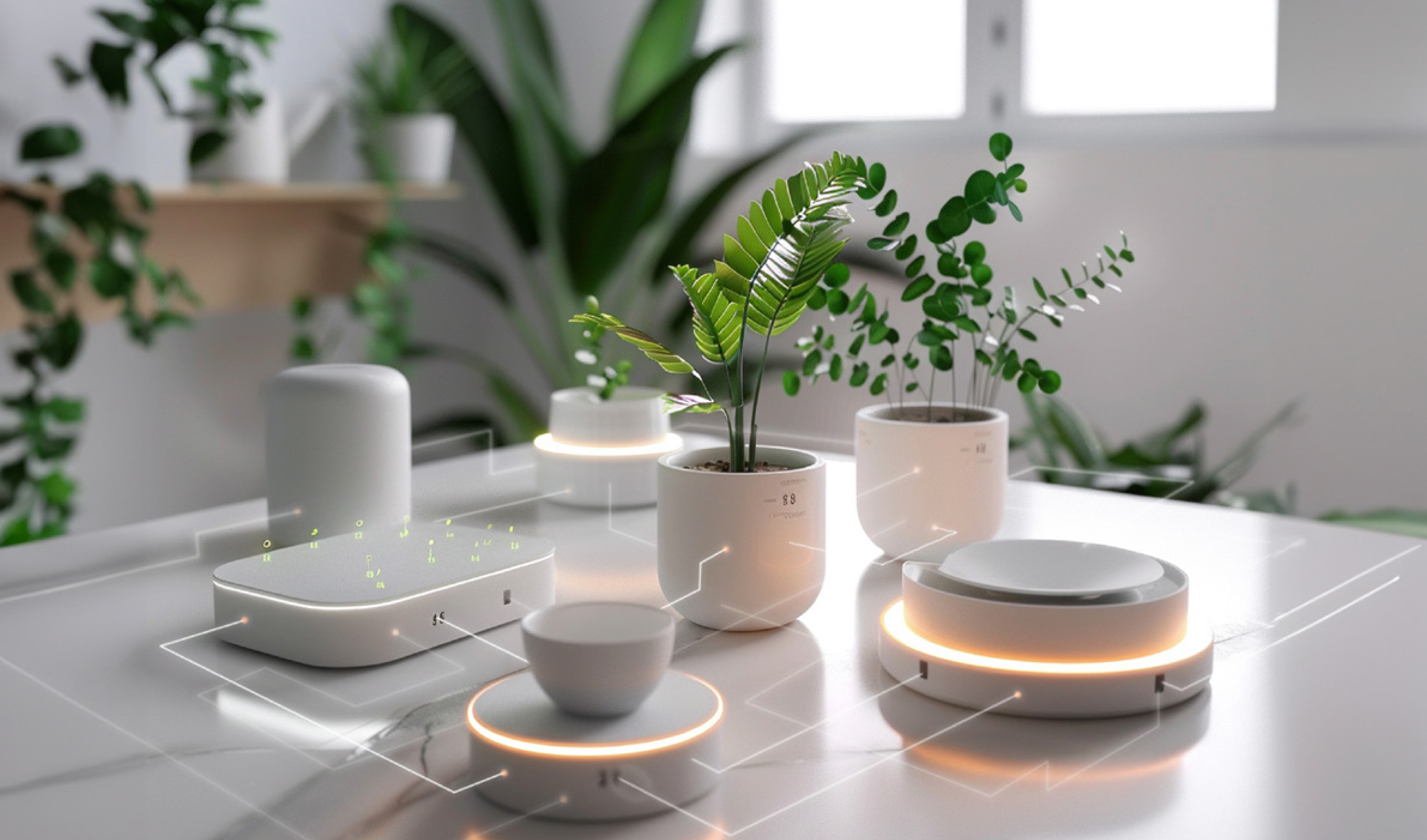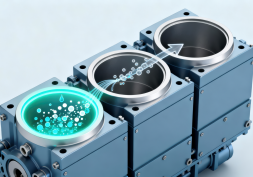Serving innovation on a ceramic platter
Follow CDE
PDF Download

Innovative ceramic wares with built-in electronic circuits are capable of responding to touch, temperature and moisture, blending technology with everyday items to create convenience and connection.
Sometimes, innovation hides in plain sight. Or in items you’d least expect. Such as the breakfast china used to hold scrambled eggs or the porcelain bowl cradling a comforting serving of ramen or the decorative vase brightening up a living room.
All these items share a common denominator: ceramic. It’s ubiquitous — yet often overlooked and underutilised. Assistant Professor Clement Zheng from the Division of Industrial Design (DID) at the College of Design and Engineering, National University of Singapore, sees untapped potential in glazed ceramics and has infused these common objects with his ingenious touch — by integrating electronic circuits to bring them to life.
Asst Prof Zheng’s research introduces a fresh approach to embedding interactive circuits into ceramics. By carving traces on the ceramic surfaces and filling them with conductive ink, his work has transformed everyday objects into human-computer interfaces and smart devices that can participate in daily activities — from touch-sensing tableware to temperature-sensitive tiles to moisture-aware flowerpots.
This approach was published in a paper presented at the 2023 CHI Conference on Human Factors in Computing Systems.
Assistant Professor Clement Zheng embedded interactive circuits into ceramic wares, transforming everyday objects into human-computer interfaces and smart devices.
When craft and computing collide
In ‘ubiquitous computing’, computational technology disappears and weaves itself into the fabric of everyday life. This concept guided Asst Prof Zheng and his team as they explored the potential of interactive circuits on glazed ceramic ware. Drawing inspiration from smart textiles and touch-sensitive surfaces led to the eureka moment where they imagined a future in which everyday ceramic objects could be transformed into interactive interfaces.
Bringing together a unique blend of expertise, involving professional designers and builders of interactive systems, the multidisciplinary team “aimed to entangle the materiality of the investigated craft with the physical and computational materiality of tangible interfaces and interactive electronics.”
The process began with masking the ceramic surfaces using adhesive vinyl film cut into intricate patterns. Using an adaptation of resist-blasting, a technique developed by Associate Professor Hans Tan from DID, the team then sandblasted these masked surfaces to carve out the circuit traces on the surfaces. Once the masking was removed, the recessed areas formed the foundation for the circuits.
Next, they adorned these recessed traces with conductive inks, creating functional — and aesthetically pleasing — electronic traces. This meticulous process transformed ordinary ceramics into smart devices capable of sensing a range of parameters, from touch to temperature to moisture.
Applications galore
Integrating interactive circuits into glazed ceramics opens up a world of practical — and intriguing — applications. Take tableware, for instance. Like the bashful touch-me-not plant, plates and bowls embedded with circuits can respond to touch, controlling ambient music or lighting during meals, as part of an overarching smart-home system. Or imagine a colour-shifting plate that senses the temperature of the food it holds, adding a new dimension to culinary presentation.
Temperature-sensitive tiles can monitor the heat levels of kitchens and bathrooms in real-time, providing visual feedback and enhancing occupant safety. For instance, sensors on the back wall of a kitchen stove can indicate if a stove is in use, or if there is a fire. In the bathroom, sensors can point out if there is a leak, or if the floor is wet.
Smart ceramics can also cultivate better plant owners. Moisture-aware plant pots can monitor soil hydration levels and alert users when plants need watering — a clever blend of technology with gardening for improved plant care.
"Reciproco is about presence and how materials and technology can support communication between two people."
"Reciproco is about presence and how materials and technology can support communication between two people."
Reciprocating warmth and conviviality
The researchers’ smart ceramics also unlock new avenues for expression. One of Asst Prof Zheng’s creations, Reciproco, conceived together with independent designer and artist Genevieve Ang, was proudly showcased at Future Impact 2, an exhibition of new works by a select group of Singaporean designers who were commissioned by Design Singapore Council.
Reciproco comprises a pair of interactive ceramic pieces coated in glaze formulated with glass waste and enhanced with thermochromic paint. The piece changes colour when the surface is activated. It is also heated with circuits embedded into the ceramic body that are triggered when touched.
"Reciproco is about presence and how materials and technology can support communication between two people."
“If someone places their hand on one, the other — whether it’s across the room or on the other side of the world — will heat up in response,” says Asst Prof Zheng. “Reciproco is about presence and how materials and technology can support communication between two people.”
Crafting ceramics of the future
Asst Prof Zheng is keen on addressing larger infrastructural needs to integrate smart ceramics into homes. “For example, while acrylic placements were a clever way to connect ceramics to a microcontroller, everything has to be carefully placed so that the conductive pads align with the pins of the placemat,” adds Asst Prof Zheng.
This includes developing specialised hardware components and collaborating with interior designers, builders and electricians to explore how ceramic interfaces — and the required electronics infrastructure — can be threaded into living spaces more seamlessly. Additionally, other future work being considered includes developing new computational design algorithms and digital fabrication processes to further enhance interactive ceramic systems.
Read More
View Our Publications ▏Back to Forging New Frontiers - July 2024 Issue
If you are interested to connect with us, email us at cdenews@nus.edu.sg









